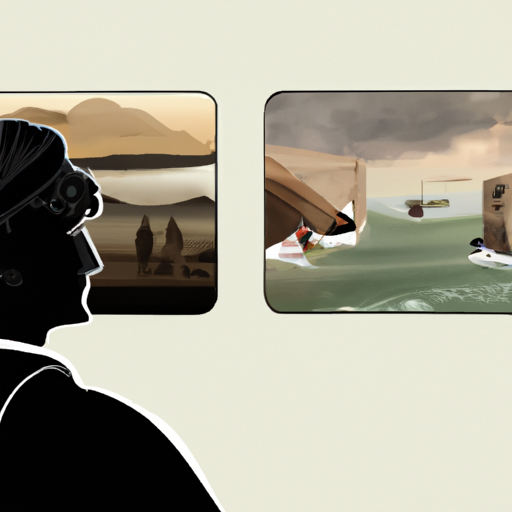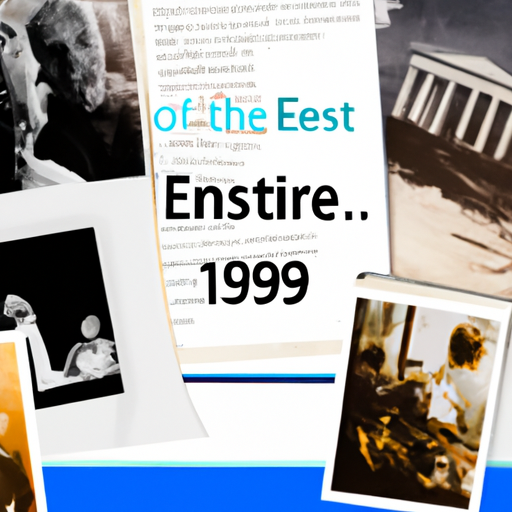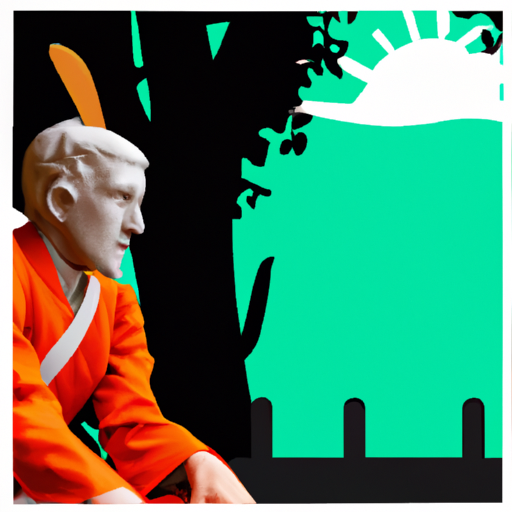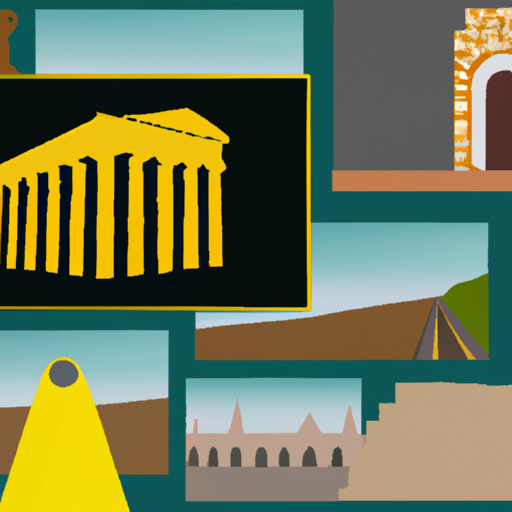History of Vikings: Exploring the Country Most Famous for its Viking Heritage
Investigate the past of the legendary Norsemen and find out which nation is renowned for their legacy! Delve into the annals of time and uncover the secrets of these seafaring warriors, whose exploits have been immortalized in tales and sagas. Unearth the truth behind their raids, conquests, and settlements, as well as their culture, beliefs, and customs. Discover which country has proudly embraced this storied heritage and become known around the world for its connection to Vikings.

Tales of daring seafarers and their adventures, conquests, and settlements have been told for centuries. But which nation is most closely associated with these legendary Norsemen? Norway has become renowned for its strong connection to Viking culture. From archaeological excavations to traditional folklore, Norwegian heritage proudly celebrates the history of Vikings in many ways. Museums devoted to artifacts and ships, as well as historical reenactments, are just a few examples of how Norway honors its past. With a deep-rooted cultural legacy steeped in myth and legend, Norway is the perfect place to discover the ancient lore of Norsemen.
.
Introduction

A mysterious group of seafaring warriors and traders, they roamed and traded across Europe from the late 8th to early 11th centuries. Norway was their home, where a long history of exploration and settlement had been established. It is here that renowned leaders like Harald Fairhair, Olaf Tryggvason, and Erik the Red made their mark. With its expansive coastline and many fjords, Norway provided the perfect conditions for Viking vessels to traverse in search of new lands to explore and conquer. It was also the site of several powerful Viking kingdoms that reigned over much of Scandinavia during this period.
– Historical Overview of Viking Expansion in Europe
An age of exploration and conquest, the Vikings left an indelible mark on Europe. Originating from Scandinavia in the 8th century CE, these Norse seafarers began to raid coastal settlements and engage in trade with other cultures. As time passed, their travels would bring them further inland and ultimately lead to the establishment of settlements that would last for centuries.
The earliest recorded Viking raids were on Lindisfarne Monastery in England in 793 CE, ushering in a period known as the Viking Age. This was followed by waves of Scandinavian settlers moving to England and Ireland, with Dublin being founded by Vikings in 841 CE. Not content with just raiding coastal towns, they also ventured into rivers such as the Seine where they sacked Paris in 859 CE and Aachen (876 CE) and York (886 CE).
By the end of the 10th century CE, Viking influence had spread far and wide across Europe. From Iceland (870 CE) to Greenland (985CE), Normandy (911CE), Russia (862CE) and even Constantinople (988CE), colonies were established while cultural traditions were shared through trade and intermarriage with local populations.
The legacy of this expansion can still be seen today; place names remain unchanged while cultural traditions have been passed down through generations. Although their presence may have been fleeting compared to other empires, their influence has endured for centuries afterwards.
– The Legacy of the Vikings and their Impact on Scandinavian History
An enigmatic force of the past, the Vikings have left a lasting imprint on Scandinavian history. In the 8th and 9th centuries, their raids across Europe sent shockwaves of fear, as fleets of longships moved swiftly and struck with unexpected ferocity. Monasteries and coastal towns were plundered for precious coins, jewelry, and sacred artifacts. But it was not only destruction that they brought; settlements were established in Sweden, Denmark, Norway, and Iceland that served as trading centers between Europe and Asia. Christianity spread through these areas as did Norse mythology and language.
The legacy of the Vikings can still be seen in modern Scandinavian culture; place names, clothing styles, cuisine all bear evidence to their influence. Moreover, their seafaring skills set up trade routes that are still utilized today. All in all, this remarkable people have left an indelible mark on the region’s development that is still evident today.
– Exploring the Cultural Significance of Viking Traditions and Beliefs
The enigmatic legacy of the Vikings continues to captivate us even today. From their seafaring lifestyle that traversed Europe and beyond, to their complex religious beliefs and rituals, to their code of honor and artistry; the Vikings have left an indelible mark on history.
Their polytheistic faith was centered around gods like Odin, Thor, Freyr and Freyja – each representing a different aspect of life such as war, thunderstorms, fertility and wealth or love and beauty. Offerings were made in hopes of gaining favor from these powerful deities.
Honor was highly esteemed in Viking society; courage in battle, loyalty among friends, hospitality towards strangers and respect for elders were all seen as virtues to be upheld. Rituals often focused on honoring the gods or seeking divine favor in various endeavors.
Viking art is also noteworthy, depicting scenes from Norse mythology or daily life during the Viking Age through wood carving, metalwork jewelry-making and other methods. These works were not only aesthetically pleasing but served as symbols of power within society while simultaneously reminding its people of their religious beliefs.
By understanding these ancient customs we can gain insight into our ancestors’ values centuries ago – allowing us to appreciate our own cultures even more deeply.
– How Viking Raids Shaped European History and Geography
A group of seafaring warriors from Scandinavia, the Vikings, left an indelible mark on European history and geography with their raids across the continent from the 8th to 11th centuries. Their skillful sailing enabled them to travel far and wide, plundering coastal towns for food, tools, weapons, slaves, gold and silver. These raids had a lasting impact on Europe’s political landscape as rulers sought ways to protect their lands from Viking attacks. As they settled in new areas, trading routes were established which connected distant regions with each other. The Vikings also introduced new technologies such as ironworking and shipbuilding that would later be used by Europeans for centuries after them. Christianity too was spread to Scandinavia by these intrepid raiders who brought with them religious ideas that would shape the region’s future. The reverberations of these raids are still felt today in Europe’s history and geography.
– Examining the Archaeological Evidence for Viking Settlements in Scandinavia
Enthralling archaeologists and historians alike, the annals of Viking settlements in Scandinavia have been a source of perpetual fascination. Uncovering the archaeological evidence for these settlements offers a singular glimpse into the lives and culture of the Vikings, who were remarkable figures during the Middle Ages in Europe. Archaeological remains can offer invaluable knowledge about how these settlers lived and interacted with their environment. This article will delve into various aspects of Viking settlement archaeology, including artifacts, buildings, burial sites, and more. By examining these materials, we can gain an understanding of how the Vikings lived and interacted with their surroundings as well as how they impacted the evolution of modern Scandinavian society.
conclusion

What is the foremost country when it comes to the topic of Vikings? That’s right, Norway! Norse culture, associated with a certain era of exploration and expansion, can be traced back to its origins in Norway, and flourished far and wide during that time.
.
Some questions with answers
Q1. What country is best known for Vikings?
A1. Scandinavia, specifically Norway, Denmark and Sweden.
Q2. How did the Vikings shape history?
A2. The Vikings were important traders who introduced new technologies and cultures to other parts of Europe, as well as colonizing new lands such as Iceland, Greenland and Newfoundland in North America.
Q3. What was the Viking lifestyle like?
A3. Viking society was largely based on farming and fishing, with a strong emphasis on warfare and raiding. They were also skilled craftsmen and traders who travelled extensively throughout Europe.
Q4. What type of ships did the Vikings use?
A4. The Vikings used longships which were light, fast vessels that could be sailed in both shallow waters and open seas.
Q5. How long did the Viking Age last?
A5. The Viking Age lasted from around 800 AD to 1100 AD in northern Europe.




